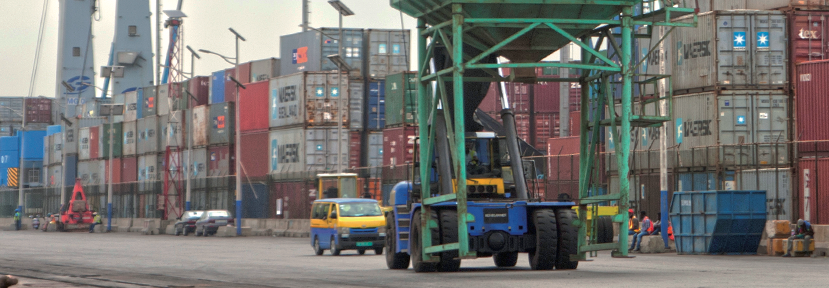Rising industrial and energy output, along with steady declines in inflation and debt levels, combined to support accelerated growth in Ghana in 2017, and continued fiscal reforms point to a positive outlook for 2018.

The economy gained momentum last year, expanding by 7.8% year-on-year (y-o-y) in the first six months, according to Ghana’s 2018 budget statement, tabled to Parliament in November.
While full-year results for 2017 have not yet been announced, the performance in the first half of the year put the economy firmly on track to hit the government’s year-end growth projection of 7.9%, up from original forecasts of 6.3% and well above 2016’s expansion of 3.7%.
Industry was the best performing sector, growing by an estimated 17.7% on the back of higher-than-expected upstream oil production. The mining and quarrying segment, of which hydrocarbons is a significant contributor, was forecast to record year-end expansion of 52.3%, while power generation was set to rise by 6.7% and construction by 3.7%.
Elsewhere, the services sector, which accounts for 55.9% of economic activity, was expected to post growth of 4.7% in 2017, while agriculture was on track to expand by 4.3%.
Hydrocarbons and services to drive future growth
The upward trend is expected to continue into the coming years. The government predicts GDP will increase by 6.8% in 2018, followed by growth of 7.3% in 2019 and 5.6% in 2020.
While hydrocarbons activity is set to spur short-term expansion, the further development of segments such as ICT and education will drive growth in the medium term, according to government estimates.
Fiscal reforms help reduce national debt
On top of increased activity in key sectors, 2017 also saw Ghana make progress on efforts to reduce the spending and debt levels.
Since 2015 the country has taken part in an IMF programme designed to improve fiscal management by containing expenditure and making structural reforms to strengthen public finances. In return, the fund has so far disbursed around $565m in financing as part of the three-year, $918m programme.
The implementation of the reforms appears to be having a positive effect; the IMF predicted public debt would drop from 73.4% of GDP at the beginning of 2017 to 70.5% by the end of the year, with this rate expected to fall further to 66.1% in 2018 and 55.1% by 2022.
The government is also making progress on narrowing its budgetary deficit, which the IMF expects to progressively decline from 9.3% of GDP in 2016 to 2.8% by 2022.
Despite this progress, the forecast deficit levels for 2017 were still well above the 3.5% target set by the IMF programme; the fund has highlighted the need to maintain fiscal discipline and continue to implement reforms in order to maximise growth potential.
Lower inflation drives down interest rates
Inflation has continued to cool, easing to 11.7% in November, according to data issued by the Ghana Statistical Service, down from the 15.5% recorded the same month in 2016. The rate was up only marginally from 11.6% in October, which was the lowest level since August 2013.
The food and non-alcoholic beverages subindex was running at 7.9% as of November, though this was offset by the non-food component, which stood at 13.6%, driven largely by higher transport and clothing costs.
Inflation should reach targeted levels of between 6% and 10% by the second quarter of 2018, according to Ernest Addison, the governor of the Bank of Ghana (BoG); however, with oil prices tipped to rise in 2018, further increases in transport costs, along with the decline in the value of the cedi – which lost 5% over the course of 2017 – could contribute to inflationary pressures in the new year.
Lower consumer inflation was supported by a relatively steady rise in the production price index, with wholesale prices up 8.2% y-o-y in October.
The continued fall in inflation flowed into monetary policy. The BoG cut its benchmark interest rate four times throughout the year, to 20% in November, the lowest level since October 2014.
Announcing its reduction, the bank’s monetary policy committee said ongoing declines in inflation, combined with increased economic activity, were the supportive factors in the decision to cut rates.


